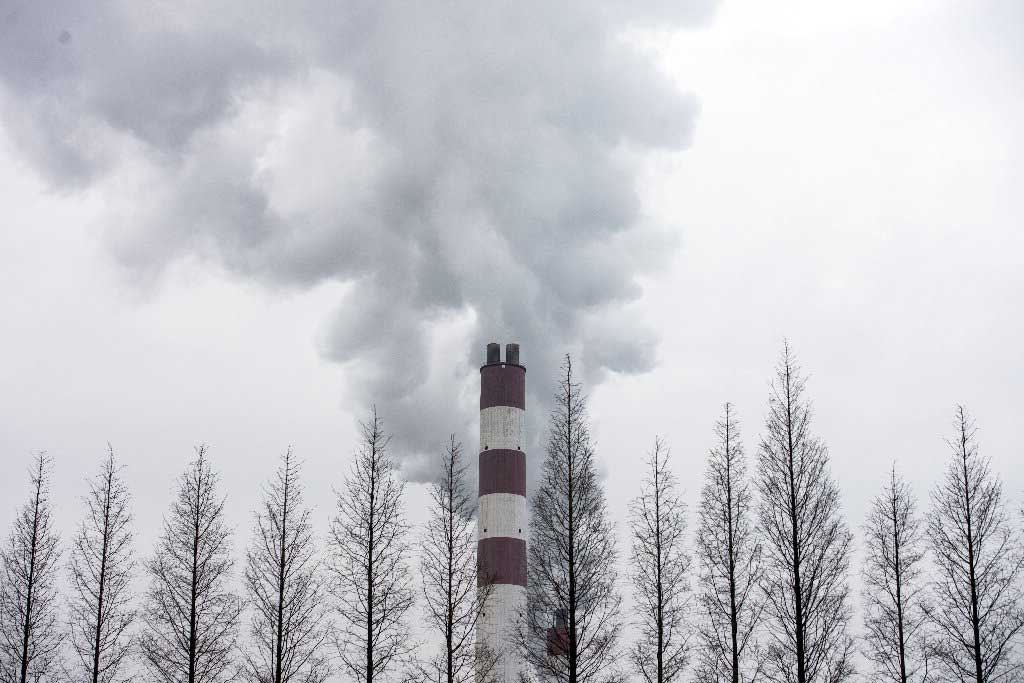China’s carbon emissions trading has started
On July 16, 2021, the launching ceremony of China’s carbon market was held in Beijing, Shanghai, and Wuhan at the same time. China’s high-profile carbon emissions trading market Online trading officially began. The opening price on the first day of launch was 48 yuan/ton. Soon, the first national carbon transaction has been successfully matched, with a price of 52.78 yuan per ton, a total of 160,000 tons of transactions, and a transaction volume of 7.9 million yuan.
After the launch of China’s carbon market, price signals will be used to guide the optimal allocation of carbon emission reduction resources, thereby reducing the emission reduction costs of the entire society. The Minister of the Ministry of Ecology and Environment of the Chinese Government stated that the national carbon market is a major institutional innovation that uses market mechanisms to control and reduce company emissions and promote green development.
The power generation industry became the first industry to be included in China’s carbon market. According to Huang Runqiu, Minister of the Ministry of Ecology and Environment of the Chinese Government, in the first industrial cycle of the national carbon market, there were 2,162 key open units in the power generation industry, covering approximately 4.5 billion tons of carbon dioxide emissions. This means that China’s carbon market will become the world’s largest market covering greenhouse gas emissions.
In fact, the launch of China’s carbon market has been brewing for a long time. Since 2011, pilot projects for carbon trading have been carried out in seven provinces and cities including Beijing, Shanghai, Tianjin, Chongqing, Hubei, Guangdong and Shenzhen. The pilot market covers nearly 3,000 key emission units in more than 20 industries such as electric power, steel, and cement. By June 2021, the pilot provinces and municipalities’ carbon market will have a cumulative trading volume of 480 million tons of carbon dioxide equivalent, with a turnover of approximately 11.4 billion yuan.
As early as the end of 2017, the National Development and Reform Commission of China issued the “National Carbon Emissions Trading Market Construction Plan (Power Generation Industry)”, and for a time there was news that the national carbon market was about to start. However, it was not until September 2020, when China proposed a carbon peak and carbon neutral target, that the relevant process was further accelerated.
Zhao Yingmin, Deputy Minister of the Ministry of Ecology and Environment of the Chinese Government, pointed out on July 14 that the carbon trading pilots in seven provinces and cities have effectively promoted the reduction of greenhouse gas emissions by enterprises in the pilot provinces and cities, and accumulated experience and laid the foundation for the construction of the national carbon market.
China’s carbon market has adopted the “two-city model”, where Shanghai is responsible for the construction of national carbon trading institutions and systems, and Wuhan is responsible for the construction of national carbon registration and settlement institutions and systems. Currently, the Shanghai Environmental Energy Exchange and the Hubei Carbon Emissions Trading Center assume relevant responsibilities for the time being.
Specifically, carbon emission allowances are carried out through the national trading system through agreement transfer, one-way bidding and other methods that comply with regulations. At present, the pre-allocation of the first compliance cycle of China’s carbon market (from January 1, 2021 to December 31, 2021) has been issued.
According to the “Announcement on Matters Related to National Carbon Emissions Trading” issued by the Shanghai Environment and Energy Exchange on June 22, 2021, the transaction price of the listing agreement transaction is determined within ±10% of the closing price of the previous trading day; block agreement The transaction price of the transaction is determined within ±30% of the closing price of the previous trading day.
Judging from the operation of the 7 local pilots across the country, the weighted average carbon price in the past two years has been around RMB 40. The first national carbon transaction has been successfully matched, and the price is 52.78 yuan per ton. This price is much lower than the EU carbon market, which once exceeded 50 euros per ton. Zhao Yingmin, Deputy Minister of the Ministry of Ecology and Environment of the Chinese Government, said that currently, in the design of China’s carbon market-related systems, policy measures such as improving quota allocation methods and introducing offset mechanisms are being considered to guide market expectations, thereby forming a reasonable carbon price.
Zhao Yingmin, deputy minister of the Ministry of Ecology and Environment of the Chinese Government, said that the power generation industry is a breakthrough because the industry directly burns coal and emits relatively large carbon dioxide. “More than 2,000 key emission units in the power generation industry across the country, including self-provided power plants, emit more than 4 billion tons of carbon dioxide. Therefore, the power generation industry is the first start-up industry to give full play to the carbon market’s initiative to control greenhouse gas emissions.
In addition, the feasibility is also an important consideration. accurate emissions data, the premise is to carry out effective access to carbon market transactions. The power generation industry has a relatively sound management system, a single product, complete metering facility emissions data, degree of automation management industry as a whole Data management is standardized, easy to verify, and quota allocation is simple and easy.
The infrastructure construction of other industries is also in the process of continuous improvement. According to reports, high-emission industries such as petrochemicals, chemicals, building materials, steel, non-ferrous metals, papermaking, aviation, etc. Data accounting, reporting and verification also have a relatively solid foundation, which can make basic preparations for expanding the coverage of the national carbon market.
(The above information comes from China Financial News Network)

